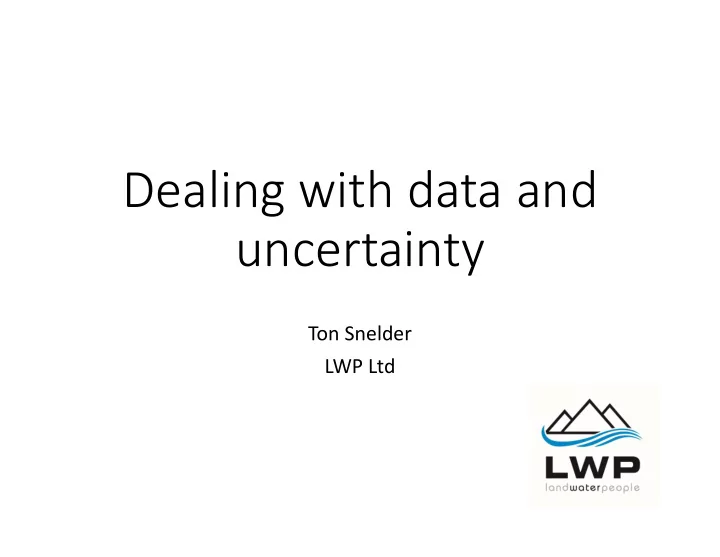

Dealing with data and uncertainty Ton Snelder LWP Ltd
Introduction • Data – where does it come from? • How do we use it? • Scientific knowledge and models • Acknowledging uncertainty
Monitoring network Long term water quality monitoring sites in the Ruamahanga catchment
Data Database Monthly Regional monitoring samples + network sites (58) Date values Q analysis 1 1989-01-26 4.000 1.300 2 1989-02-21 5.000 0.850 3 1989-03-20 4.000 1.300 4 1989-04-17 24.000 16.000 5 1989-05-16 7.000 5.600 6 1989-06-15 9.000 6.900 7 1989-07-10 5.000 2.830 8 1989-08-07 4.000 1.450 9 1989-09-05 4.000 3.450 10 1989-10-05 11.000 6.100 11 1989-11-02 4.000 7.250 12 1989-11-30 2.000 2.250
Concentrations are variable over time
Model concentration ~ flow
The characteristic concentration at a site Infrequent 95% Statistic (e.g. Median) 75% Median 25% 5%
Differences in space (between sites) Ecosystem health –Nitrate toxicity (NPS-FM)
Drivers – spatial variation Proportion of catchment in pasture land cover(%)
Model median concentration ~ land cover. Median concentrations of NO 3 N versus proportion of pastureland cover
Models and predictions Predicted NO 3 N (mg/m 3 ) Model built from multiple drivers Filling in the gaps between monitoring sites .
Model uncertainty Is this a good or bad model? Quantify the model uncertainty How much caution do I need to add to my decision because the model is imperfect?
Conclusions • Data combined with scientific knowledge is much more powerful than just data • Data are snapshots in: • time • space • Snapshots allow us to understand how the system works and to tune the models • Models are imperfect • Uncertainty informs us about the degree of caution that is warranted when using the model.
Ends
Recommend
More recommend